Fire will save the forest. This is something that members of the Mescalero Apache Tribe have known for millennia. They have used prescribed fire and other traditional scientific methods within their ancestral lands – about 100 miles north of the U.S.-Mexico border – as part of their traditional lands management practices. They want others to realize how fire can protect communities and restore wildlife habitat and watersheds.
“We live with fire,” said Thora Padilla, director of resource management and protection for the Mescalero Apache Tribe. “We don’t see it as something to be feared, or something to be put out of the way, because it has an important function within the ecosystem.”
The Mescalero Apache Reservation, sandwiched between the northern and southern sections of the Lincoln National Forest, faces wildfire threats within its communities. Both the Tribe and the U.S. Department of Agriculture’s Forest Service are working together to find ways to address climate change by blending established management methods with traditional knowledge and science.
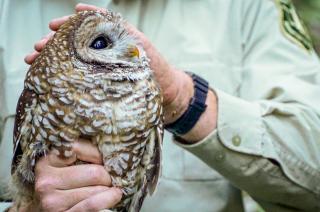
“We can’t just change things because it suits our needs,” Padilla said. “That’s why we see so many ecosystems crumbling all over the country because that is exactly what we are trying to do. People try to dominate the system [by using established management methods] when we need to live within it.”
Padilla said that removing trees and brush on tribal land does much more than reduce fuels. Native plant and animal species rely on natural thinning cycles such as low-intensity wildfire. The watershed also benefits and is restored when the forest is managed properly.
Fire is a key part of the Southwestern forested landscape, Padilla added. If people continue the decades-old tradition of completely suppressing fires they would ultimately destroy the ecosystem.
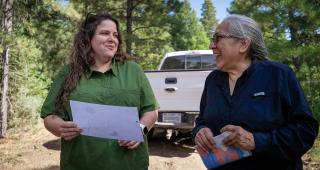
Years of federal policy to suppress all wildfires aggressively combined with increased development in the wildland urban interface and misconceptions about what makes a healthy forest all have contributed to higher risks for large-scale wildfire in the area.
Sean Donaldson, the assistant fuels management officer for the Lincoln National Forest’s Smokey Bear Ranger District, is one of the key people working with the tribe to restore the land. During his career he has seen climate change, a growing wildland urban interface, and thick brushy forests all contribute to more intense wildfires.
“Back when I first started, fire naturally went through the landscape,” Donaldson said. “And we completely stopped that, so now we need to get back to that so we can clean the forest up. That way, when a fire does come through, it has a lower chance of being a large fire or exhibiting extreme fire behavior.”
Donaldson explained that this work requires a team. While his job is focused on reducing wildfire risk, archaeologists make sure cultural resources important to the Mescalero
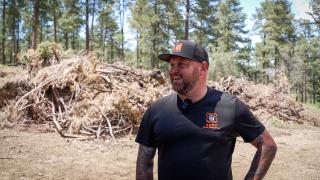
Apache Tribe are preserved, while biologists ensure endangered species on the forest can thrive. Everything is connected.
As part of this effort, Dr. Gavin Jones, a Forest Service research ecologist from Albuquerque, New Mexico, is leading a team of scientists studying the movements of the Mexican spotted owl. This endangered species makes its home on the Lincoln National Forest and throughout the Southwest.
“Here, the forest naturally had more variety in its structure created by natural disturbances like fire,” Jones remarked. “These disturbances created a more open-looking forest.”
Jones said that recent owl-tracking data suggests the animals are thriving and moving to cleared, thinned, areas of the Lincoln National Forest. This research will help biologists and forest managers determine ways to reduce wildfire risks to communities while conserving and reestablishing healthy owl populations.
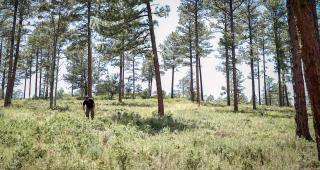
Severe wildfire remains one of the greatest threats to Mexican spotted owl habitat. For the Mescalero Apache Tribe, the owl is a messenger. It is a reminder that something is changing, and we need to listen.
By combining traditional ecological knowledge and science with western science and established management practices, these partners are hearing what the owl has to say loud and clear.
Federal programs like the Joint Chiefs’ Landscape Restoration Partnership allow the Forest Service, the U.S. Department of Agriculture’s Natural Resource Conservation Service and other federal agencies to work on restoration projects with tribes and private landowners. These projects will enable long-term solutions to reducing wildfire risks to communities. These efforts enhance research, improve understanding on what makes a healthy forest, and cause people to reevaluate long-standing perceptions along the way.
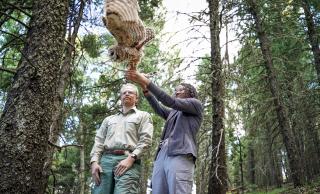
For more information about the Joint Chiefs program and how to get involved, visit the Joint Chiefs program website at https://www.nrcs.usda.gov/programs-initiatives/joint-chiefs-landscape-restoration-partnership





